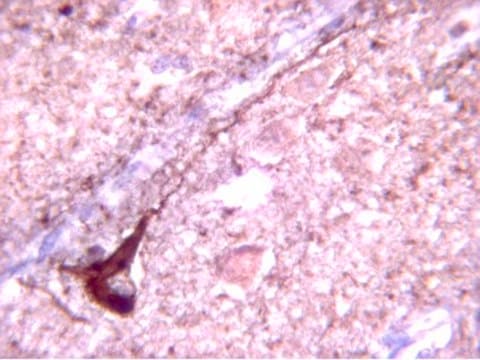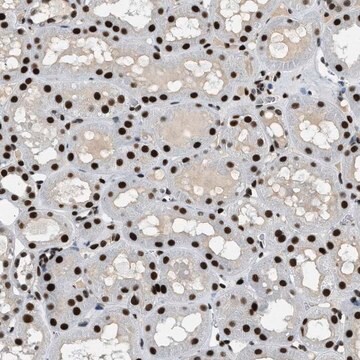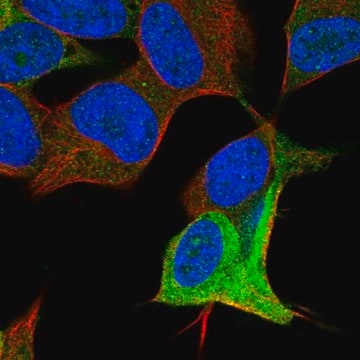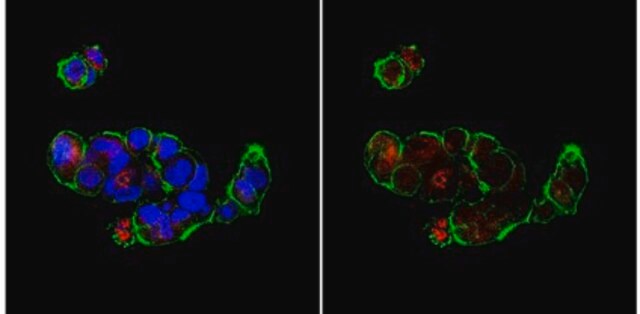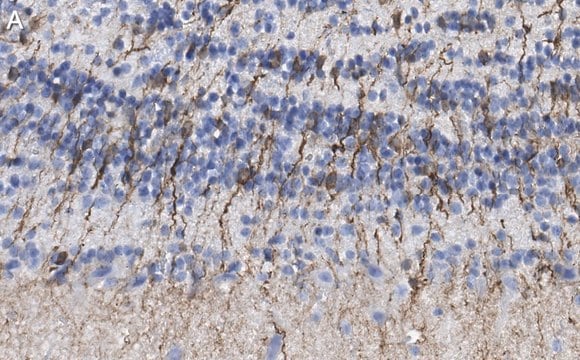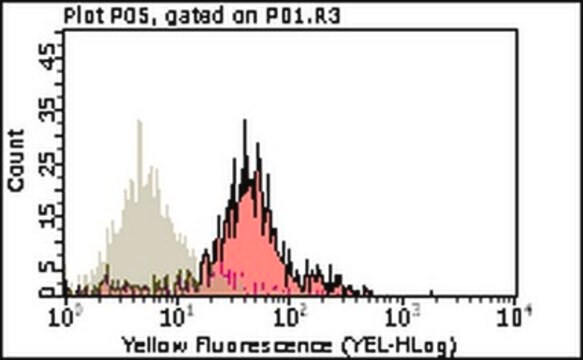MAB5654
Anti-Prox1 Antibody, clone 4G10
clone 4G10, Chemicon®, from mouse
Synonim(y):
Homeobox prospero-like protein PROX1
Wybierz wielkość
2970,00 zł
Przewidywany termin wysyłki17 lutego 2025Szczegóły
Wybierz wielkość
About This Item
2970,00 zł
Przewidywany termin wysyłki17 lutego 2025Szczegóły
Polecane produkty
pochodzenie biologiczne
mouse
Poziom jakości
forma przeciwciała
purified antibody
rodzaj przeciwciała
primary antibodies
klon
4G10, monoclonal
reaktywność gatunkowa
chicken, mouse, rat, human, lizard
producent / nazwa handlowa
Chemicon®
metody
immunohistochemistry: suitable
western blot: suitable
izotyp
IgG
numer dostępu NCBI
numer dostępu UniProt
Warunki transportu
wet ice
docelowa modyfikacja potranslacyjna
unmodified
informacje o genach
mouse ... Prox1(19130)
Powiązane kategorie
Specyficzność
Immunogen
Zastosowanie
Neuroscience
Developmental Neuroscience
Neuronal & Glial Markers
Optimal working dilutions must be determined by end user.
Opis wartości docelowych
Powiązanie
Postać fizyczna
Przechowywanie i stabilność
Informacje prawne
Oświadczenie o zrzeczeniu się odpowiedzialności
Nie możesz znaleźć właściwego produktu?
Wypróbuj nasz Narzędzie selektora produktów.
polecane
Kod klasy składowania
10 - Combustible liquids
Klasa zagrożenia wodnego (WGK)
WGK 2
Temperatura zapłonu (°F)
Not applicable
Temperatura zapłonu (°C)
Not applicable
Certyfikaty analizy (CoA)
Poszukaj Certyfikaty analizy (CoA), wpisując numer partii/serii produktów. Numery serii i partii można znaleźć na etykiecie produktu po słowach „seria” lub „partia”.
Masz już ten produkt?
Dokumenty związane z niedawno zakupionymi produktami zostały zamieszczone w Bibliotece dokumentów.
Active Filters
Nasz zespół naukowców ma doświadczenie we wszystkich obszarach badań, w tym w naukach przyrodniczych, materiałoznawstwie, syntezie chemicznej, chromatografii, analityce i wielu innych dziedzinach.
Skontaktuj się z zespołem ds. pomocy technicznej

